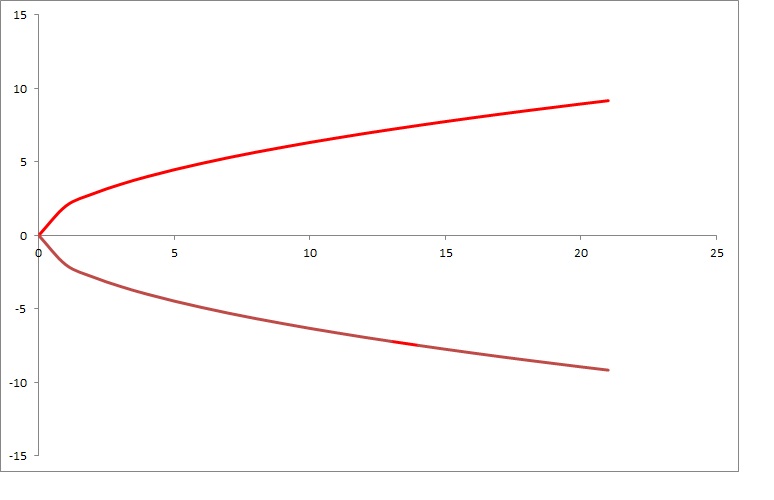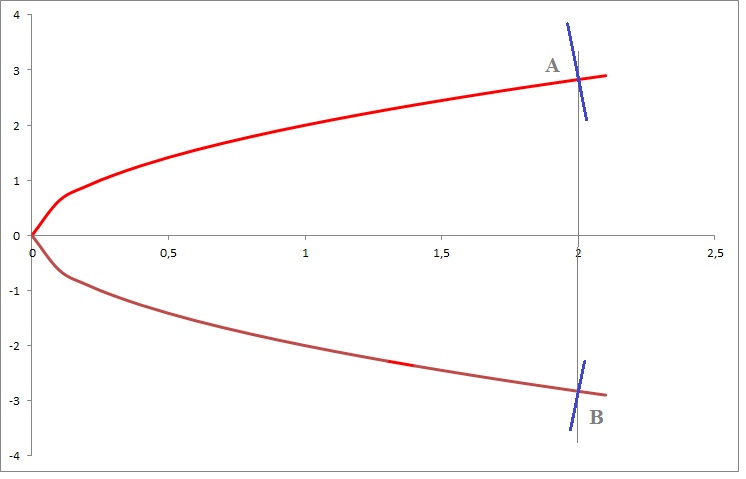I would try to derive your function first to find the slope of the curve, #m#:
#2y(dy)/(dx)=4#
#dy/dx=2/y=m# I derived implicitly and found the slope.
Now your function can be written as: #y=+-sqrt(4x)=+-2sqrt(x)#:

So basically at #x=2# we can have 2 slopes:
#m_1=2/y_1=2/(+2sqrt(x))=1/sqrt(x)#
#m_2=2/y_2=2/(-2sqrt(x))=1/-sqrt(x)#
The perpendicular lines in these points will have slopes:
#color(red)(m'=-1/m_(1,2))#
i.e.:
#m'_1=-sqrt(x)#
#m'_2=sqrt(x)#
and equation:
#color(blue)(y-y_0=m'_(1,2)(x-x_0))#
Giving two perpendicular lines in A and B:

In A:
Slope (negative): #m'_1=-sqrt(2)# at #x=2 and y=2sqrt(2)#
Equation:
#y-2sqrt(2)=-sqrt(2)(x-2)#
#y=-sqrt(2)x+2sqrt(2)+2sqrt(2)=-sqrt(2)x+4sqrt(2)#
In B:
Slope (positive): #m'_2=sqrt(2)# at #x=2 and y=-2sqrt(2)#
Equation:
#y+2sqrt(2)=sqrt(2)(x-2)#
#y=sqrt(2)x-2sqrt(2)-2sqrt(2)=sqrt(2)x-4sqrt(2)#



